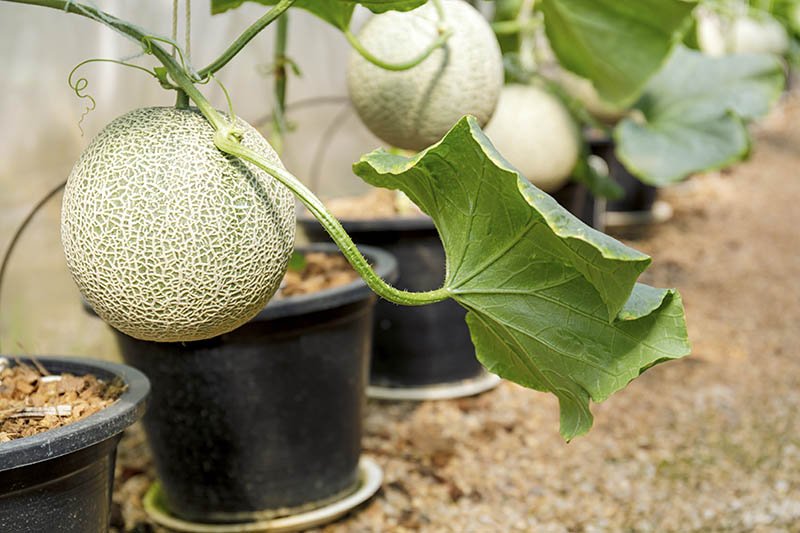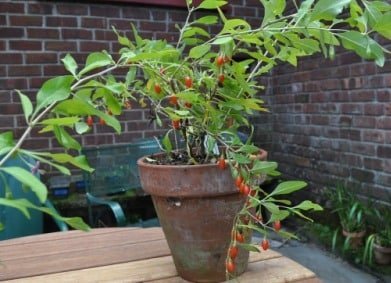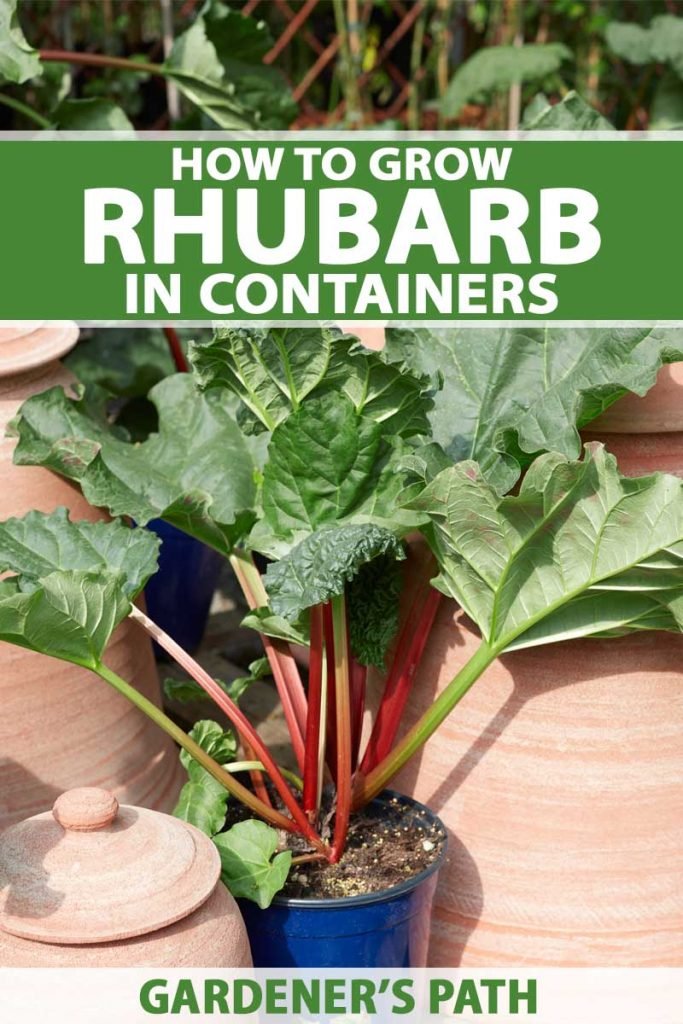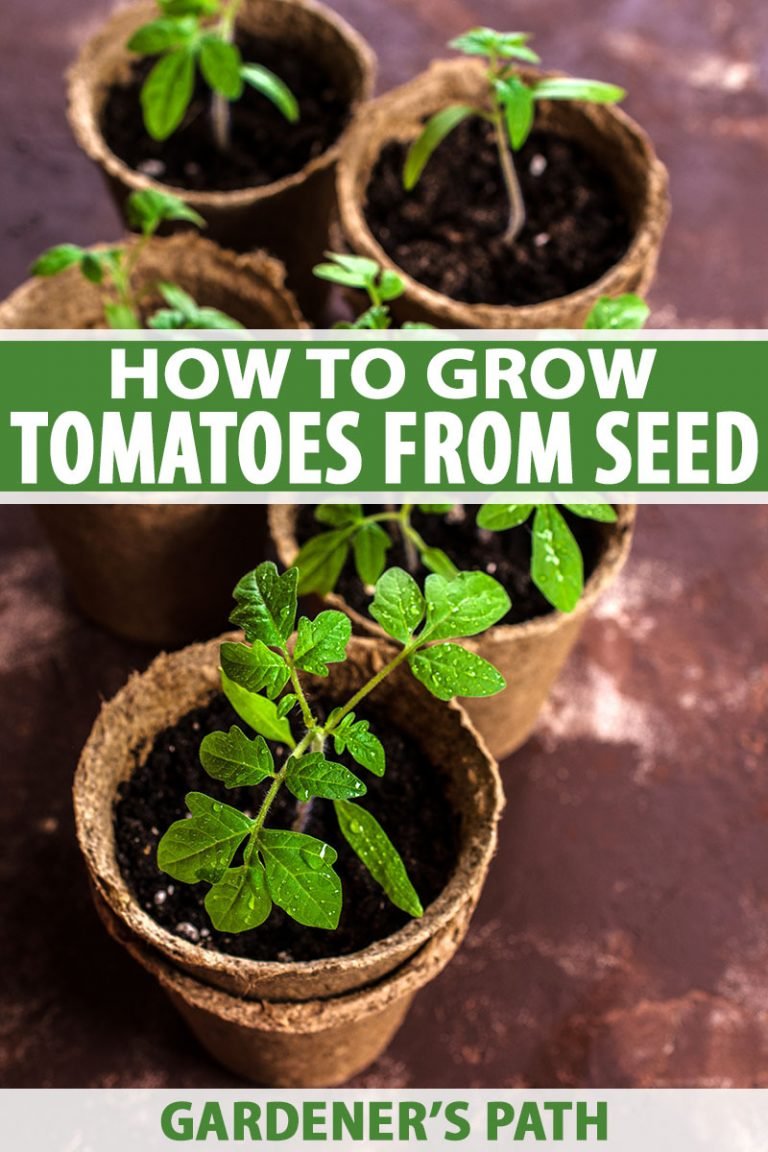how to grow cantaloupe in a pot – [Beginners Guide]
Hey there! Are you looking for a fun and delicious way to add some fresh produce to your home garden? Look no further than growing cantaloupe in a pot!
As someone who has grown cantaloupe in pots myself, I can attest to the many benefits of this method. For one, it saves space in your yard or on your balcony. Plus, the pots act as a barrier to keep out pests and make it easy to move the plants around to find the perfect spot for them to thrive.
But the real perk is the taste of fresh, homegrown cantaloupe. There’s nothing quite like biting into a juicy, ripe cantaloupe that you grew yourself. And the best part is, you don’t need a lot of space to do it. A single pot, at least 20 inches wide and deep, is all you need to grow a healthy cantaloupe plant.
So don’t wait any longer, give it a try! With a little bit of care and patience, you’ll be enjoying the sweet taste of homegrown cantaloupe in no time.
Pot or container selection
When it comes to growing cantaloupe in pots, the size and construction of the pot are important factors to consider. A pot that is too small or not well-suited to the plant can lead to stunted growth and poor fruit production.
The pot you choose should be at least 20 inches wide and deep, with a capacity of at least 20 gallons. This size will provide enough space for the cantaloupe plant to grow and develop a strong root system. It is also recommended that the pot has drainage holes at the bottom, to ensure proper drainage and prevent water from building up in the pot, which can lead to root rot.
The material of the pot is also important, clay or terra-cotta pots are a good option, as they are porous, which allows for good air circulation. This is important for cantaloupe plants as they require good air circulation to grow properly. Plastic pots are also an option, but they retain moisture more than clay pots and may lead to root rot if not monitored closely.
In summary, a pot that is at least 20 inches wide and deep with a capacity of 20 gallons, with drainage holes, and made of clay or terra-cotta is the ideal pot for growing cantaloupe in pots at home. With a little bit of care, you’ll be able to grow delicious cantaloupe right in your own backyard.
Make suitable soil mix
When it comes to growing cantaloupe in pots, the type and mixture of soil are essential for optimal growth. The correct soil composition can mean the difference between healthy plants and poor fruit production.
The ideal soil mix for cantaloupe plants should be well-draining and rich in organic matter. A good option is a mix of equal parts potting soil, coarse sand, and well-rotted compost or aged manure. This mixture will provide the cantaloupe plants with the nutrients they need to grow strong and healthy, while also ensuring good drainage to prevent water from building up in the pot, which can lead to root rot.
It’s also important to note that cantaloupe plants require a pH level between 6.0 and 6.8. You can test the pH level of your soil with a pH testing kit, which can be found at most garden centers. If the pH level is too high or too low, you can adjust it by adding lime or sulfur to the soil, respectively.
In summary, a well-draining and rich in organic matter soil mix of equal parts potting soil, coarse sand, and well-rotted compost or aged manure, with a pH level between 6.0 and 6.8 is the ideal soil mix for growing cantaloupe in pots at home. With the correct soil composition, you’ll be able to grow delicious cantaloupe in no time.
How to plant the cantaloupe?
Growing cantaloupe in a pot at home is a fun and delicious way to add some fresh produce to your home garden. Here is a step by step guide to help you through the process:
- Step 1: Choose a Pot – Select a pot that is at least 20 inches wide and deep, with a capacity of at least 20 gallons, with drainage holes, and made of clay or terra-cotta.
- Step 2: Prepare the Soil – Mix equal parts potting soil, coarse sand, and well-rotted compost or aged manure. Test the pH level of the soil and adjust it between 6.0 and 6.8 if necessary.
- Step 3: Plant the Seeds or Seedlings – Plant the seeds or seedlings in the prepared soil, leaving about 18-24 inches between plants. If planting seeds, cover them with 1/4 inch of soil and water them gently.
- Step 4: Water and Fertilize – Water the seedlings or plants immediately after planting, and keep the soil consistently moist but not waterlogged. Fertilize the plants with a balanced fertilizer every 2-3 weeks.
- Step 5: Provide Support – Provide support for the plants by tying the main stem to a stake or trellis. This will help the plant to grow upward and produce larger fruit.
- Step 6: Harvest – Wait for the cantaloupe to ripen before harvesting. You will know it’s ready when the stem slips easily from the fruit. This usually takes about 60-90 days after planting.
By following these steps, you’ll be able to successfully grow delicious cantaloupe in a pot at home. With a little bit of care and patience, you’ll be able to enjoy the sweet taste of homegrown cantaloupe in no time.
How to care for cantaloupe?
Watering Requirement
Cantaloupes require consistent and regular watering to grow optimally. It is important to keep the soil consistently moist but not waterlogged. A general rule of thumb is to provide 1 inch of water per week, either through watering or natural rainfall. Watering can be done at the base of the plant, to avoid getting water on the leaves, which can lead to fungal growth.
Fertilizer Requirement
Cantaloupes are heavy feeders and will benefit from regular fertilization. A balanced, water-soluble fertilizer can be applied every 2-3 weeks during the growing season. Additionally, a side dressing of compost or well-rotted manure can be added to the soil during the early stages of growth.
Sunlight Needs
Cantaloupes require full sun to grow, at least 6-8 hours of direct sunlight per day. They should be planted in an area that receives full sun exposure throughout the day. If grown in a pot, it is important to rotate the pot occasionally to ensure that all parts of the plant receive equal sun exposure.
Pruning & Training
Cantaloupes are trailing plants, and will benefit from training and support. When the plant reaches 6-8 inches in height, it should be trained to grow along a trellis or fence. This will help to keep the plant off the ground, reducing the risk of fungal growth and insect damage. Regular pruning of the leaves and tendrils is also important to promote healthy growth and fruit production.
Other Care
- It is important to keep the area around the cantaloupe plant free of weeds and debris, as these can harbor pests and diseases.
- Mulching the soil around the plant can help to retain moisture and control weeds.
- Keep an eye out for pests and diseases, and take appropriate action if any are found.
Note: Cantaloupes typically take 80 to 90 days to reach maturity, so it is important to be patient and care for the plant throughout the entire growing season.
Common problems
Pests
Cantaloupes grown in pots can be affected by a variety of pests, including aphids, cucumber beetles, and spider mites. These pests can damage leaves, stems, and fruit, and can also transmit diseases. Regularly inspecting the plant for pests and taking appropriate action, such as using insecticidal soap or neem oil, can help to control pest populations.
Diseases
Cantaloupes grown in pots are susceptible to a variety of diseases, including powdery mildew, downy mildew, and anthracnose. These diseases can cause leaf and fruit damage, and can also reduce yield. Proper cultural practices, such as providing adequate spacing between plants, avoiding overhead watering, and providing proper sun exposure, can help to prevent disease development.
Poor Production
Poor production of cantaloupes in pots can be caused by a variety of factors, including inadequate pollination, poor soil fertility, and improper care. Providing adequate pollination by hand or using a small brush can help to ensure that the plant produces fruit. Additionally, providing regular fertilizer and maintaining proper soil moisture can help to improve production.
Other issues
- Cantaloupes grown in pots may also have issues with fruit rotting, which is caused by improper water management or poor air circulation.
- Another common issue is that the fruit may not reach full maturity if the plant is not given enough time to develop and grow before being harvested.
- Cantaloupes grown in pots may also be more susceptible to temperature fluctuations, so it is important to protect the plant from extreme heat or cold.
Note: It is important to keep a close eye on the plant for any signs of stress or illness and take appropriate action to address any issues that arise.
Harvesting & storing homegrown cantaloupe
Pests
Cantaloupes grown in pots can be affected by a variety of pests, including aphids, cucumber beetles, and spider mites. These pests can damage leaves, stems, and fruit, and can also transmit diseases. Regularly inspecting the plant for pests and taking appropriate action, such as using insecticidal soap or neem oil, can help to control pest populations.
Diseases
Cantaloupes grown in pots are susceptible to a variety of diseases, including powdery mildew, downy mildew, and anthracnose. These diseases can cause leaf and fruit damage, and can also reduce yield. Proper cultural practices, such as providing adequate spacing between plants, avoiding overhead watering, and providing proper sun exposure, can help to prevent disease development.
Poor Production
Poor production of cantaloupes in pots can be caused by a variety of factors, including inadequate pollination, poor soil fertility, and improper care. Providing adequate pollination by hand or using a small brush can help to ensure that the plant produces fruit. Additionally, providing regular fertilizer and maintaining proper soil moisture can help to improve production.
Other issues
- Cantaloupes grown in pots may also have issues with fruit rotting, which is caused by improper water management or poor air circulation.
- Another common issue is that the fruit may not reach full maturity if the plant is not given enough time to develop and grow before being harvested.
- Cantaloupes grown in pots may also be more susceptible to temperature fluctuations, so it is important to protect the plant from extreme heat or cold.
Note: It is important to keep a close eye on the plant for any signs of stress or illness and take appropriate action to address any issues that arise.
Growing cantaloupe in container – Conclusion
In conclusion, growing cantaloupe in a pot is a great way to have fresh and delicious melons at home. With the right care and attention, you can successfully grow this tasty vegetable in a small space. Here are some key takeaways to keep in mind when growing cantaloupe in a pot:
- Choose a large enough pot with good drainage.
- Use high-quality potting soil.
- Provide plenty of sunlight and warmth.
- Keep the soil consistently moist, but not waterlogged.
- Fertilize regularly with a balanced fertilizer.
- Provide support for the vine as it grows.
If you are ready to try your hand at growing cantaloupe in a pot, be sure to gather the necessary materials and follow the instructions closely. You’ll be enjoying your own sweet and juicy cantaloupes in no time!







